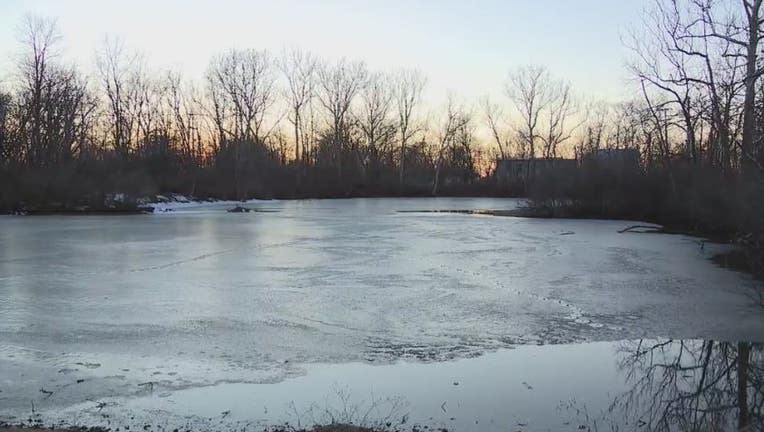Frozen Michigan lakes no longer safe for recreation as warm air moves in, Oakland County sheriff says

DETROIT (FOX 2) - As temperatures start to rise, the ice on Michigan lakes becomes riskier for outdoor activities, advises the Oakland County Sheriff's office.
Longer daytime temperatures warm lakes, rivers, and ponds, the department said. Even if the surface is still ice-covered, they're still unsafe for any activity.
"No ice is 100% safe and as spring approaches and temperatures become more moderate, any kind of outdoor activity on the ice increases the risk of a tragic outcome exponentially," Oakland County Sheriff Michael Bouchard said. "Our search and rescue divers trained this week on a frozen lake, and the ice conditions were poor at best. The ice was six inches thick in one area and less than an inch in another. It was a mess. Venturing out now on unstable and deteriorating ice puts everyone’s life in danger – yours and the rescuers."
Last month, the sheriff’s search and rescue unit responded to a call in Commerce Township for a snowmobile that had partially broken through the ice on a lake. The driver escaped without injury and the snowmobile was removed by a tow truck.
Bouchard said ice conditions on every lake change daily, even in the same location.
Signs of changing ice conditions include any moving water, depressions in the snow, heavy snow, white "milky" or black-colored ice, and "frazzle" ice, which is when ice is weakened by the freeze-thaw cycles. Frazzle ice has tiny air pockets and often looks like frozen slush. These are all signs of thin or unsafe ice.
RELATED: Men rescued on Saginaw Bay need rescuing again
If someone falls through the ice, the sheriff's office recommends not running to the hole.
Instead, call 911, then use a pole, branch, rope, or any other nearby object that can be extended to the victim at a safe distance. "You cannot help if you become a victim," the sheriff's office said.
They also offer tips if you fall through the ice. First, try not to panic, as it will only hinder your self-rescue actions. Call out for help and kick your feet, while getting your hands and then arms up onto safer ice. Carry an ice awl or a screwdriver, which will help you with your self-rescue. Continue to "swim" up onto the ice far enough to crawl or "roll-out" to safer ice.
The sheriff's office offers advice for pets as well. If your pet has ventured out onto the ice, resist the urge to go out after them.
Rather, stay at a safe position on shore and persuade them back to safety. Wildlife venturing onto unsafe ice is a natural occurrence. Wildlife such as deer are strong swimmers, prepared for cold weather, and often find their own way off the ice.

